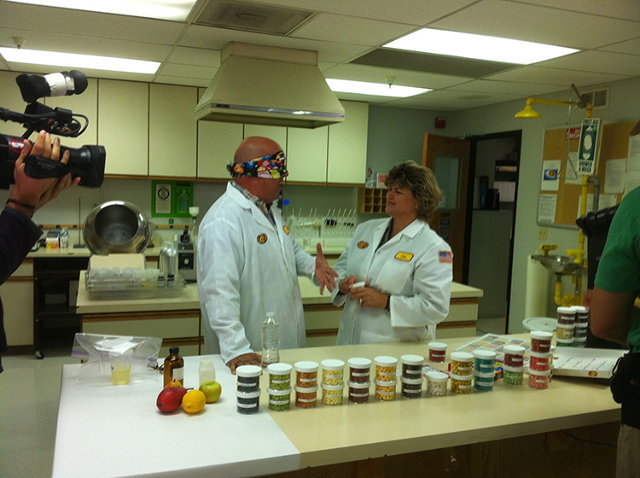In what could be the greatest thing to happen to drinking in public since the paper bag, Jelly Belly has invented a revolutionary new way to get around America's open container laws: put beer into a jelly bean. According to Jelly Belly, beer-flavored jellybeans have been their most popular request for ages, but actually designing one from scratch took more than three years to get right.
"People send us flavor ideas all the time, but the one we're asked to make the most is a beer-flavored jelly bean," says Ambrose Lee, Jelly Belly's head flavor scientist, based at the company's headquarters in Deerfield, Michigan. "We go to over 500 events a year; at literally every one, someone asks us for a beer jelly bean. With the craft beer scene exploding, the timing finally seemed right."

But making a beer-flavored jellybean is easier said than done. What kind of beer should it be? There are countless varieties and styles of beer, each with its own flavor, including IPAs, porters, stouts, saisons, lambics, pilsners, and so on. At the end of the day, Jelly Belly went with hefeweizen, a refreshing German wheat ale with a simple list of ingredients, albeit under a more marketable name: Draft Beer.
To create the Draft Beer jelly bean, Jelly Belly had to surmount a big problem. A point of pride at the candymaker is using real ingredients whenever possible, but any candy they make has to be non-alcoholic. Jelly Belly can't just pour beer into a jellybean-making machine and hit a button. They needed to find out a way to mimic the taste of hefeweizen, without actually using hefeweizen.

To simulate the taste, Jelly Belly used a machine that operates like a mechanical taste bud. It chemically analyzed a frosty hefe, then represents it as a data graph, showing various peaks which represented how the flavor would be experienced over a period of five minutes. Lee and his team then tried to design a jelly bean that, when sampled by this machine, matched the chart of a Hefeweizen as closely as possible.
But the most important thing about the design of a jellybean, Lee says, isn't taste; it's how it looks. "The visual appearance of a jelly bean is the primary factor in how it is experienced," Lee tells me. "If you pick up a red jelly bean, you expect it to be cherry; if it turned out to be lemon instead, people would still be convinced they were eating cherry."
As such, it was incredibly important for the Draft Beer jelly bean to trigger a mental association with beer in people's minds: no matter what a bean tastes like, people won't experience it as intended unless the color makes sense to them. In the case of the beer jelly bean, Lee wanted something that looked liquid and effervescent, but experiments with a clear, pale yellow jellybean made it look frostbitten. In the end, Jelly Belly settled on a shiny golden color that looks, a bit, like a freshly poured pint in a frosty glass. It took months to get right.

Although Lee won't divulge what ingredients went into the Draft Beer Jelly Belly, it tastes something between a Buttered Popcorn Jelly Belly and a Banana Jelly Belly. As someone who has consumed more than his body weight in Hefeweizens during my years living in Germany, that's pretty accurate.
But will Jelly Belly branch out from here? Could we see other beer-flavored jelly beans soon: a Guinness- or Budweiser-flavored jelly bean, perhaps?
Lee said that, while Jelly Belly has reached out to a number of big brewers about partnership deals, so far, the response has been surprisingly reticent. Maybe they don't want customers expecting a beer that tastes as good as a jelly bean, or consuming them with the same indiscriminate abandon.
You can buy some Draft Beer Jelly Beans for yourself here.